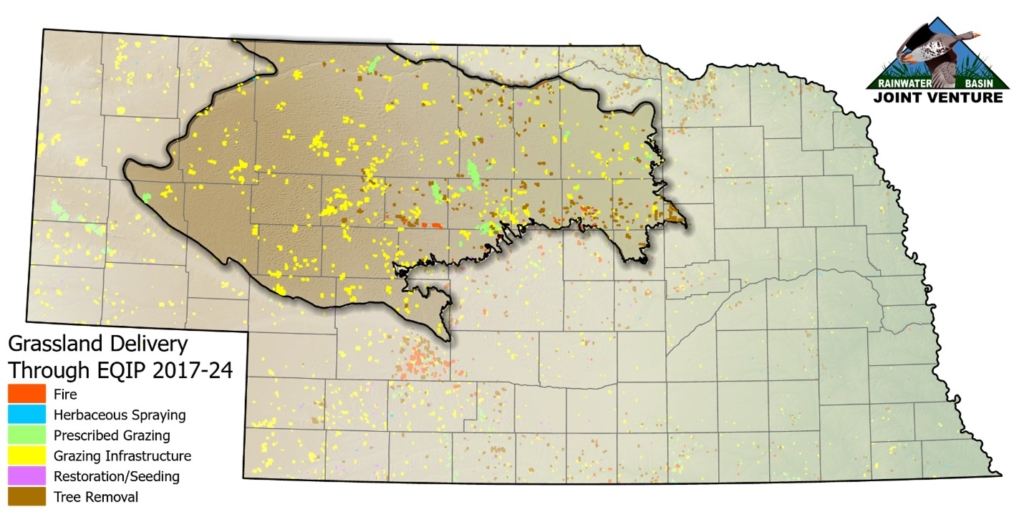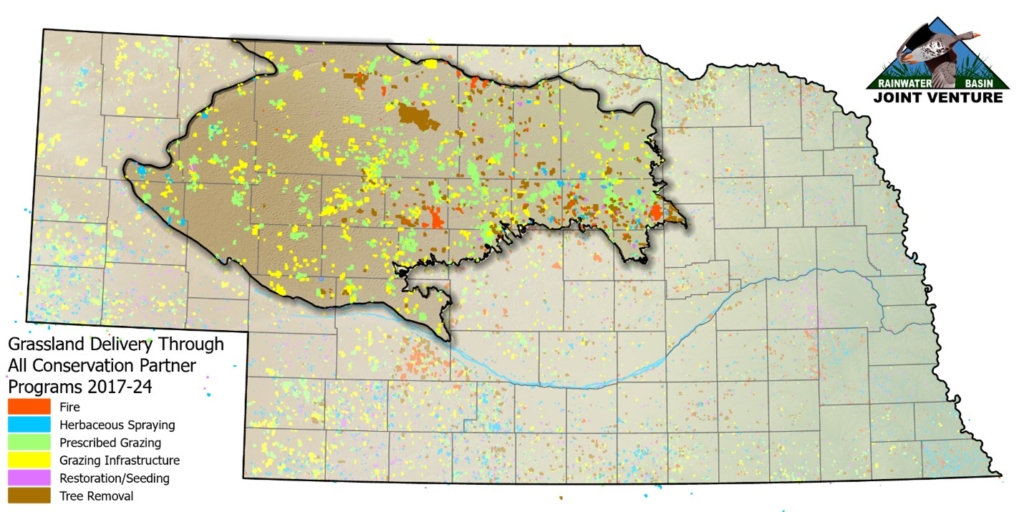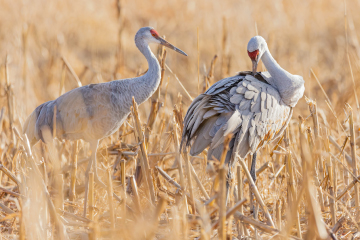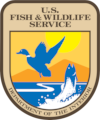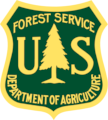Grassland Conservation Through the Working Lands for Wildlife Initiative and EQIP
Nebraska’s Sandhills are an iconic landscape with the largest intact dune-stabilized grasslands in North America and most intact temperate grassland in the world. However, this intactness is under threat from woodland expansion, primarily by eastern red cedar (ERC, Juniperus virginiana). Woodland expansion is proceeding from the Sandhill’s eastern boundary (figure 1), threatening habitat for grassland bird’s sensitive to tree presence. In particular, the eastern sandhills comprises the core of greater-prairie chicken habitat (GRPC, Tympanuchus cupido) in Nebraska (figure 2), which itself is estimated to comprise 65% of the GRPC global population.
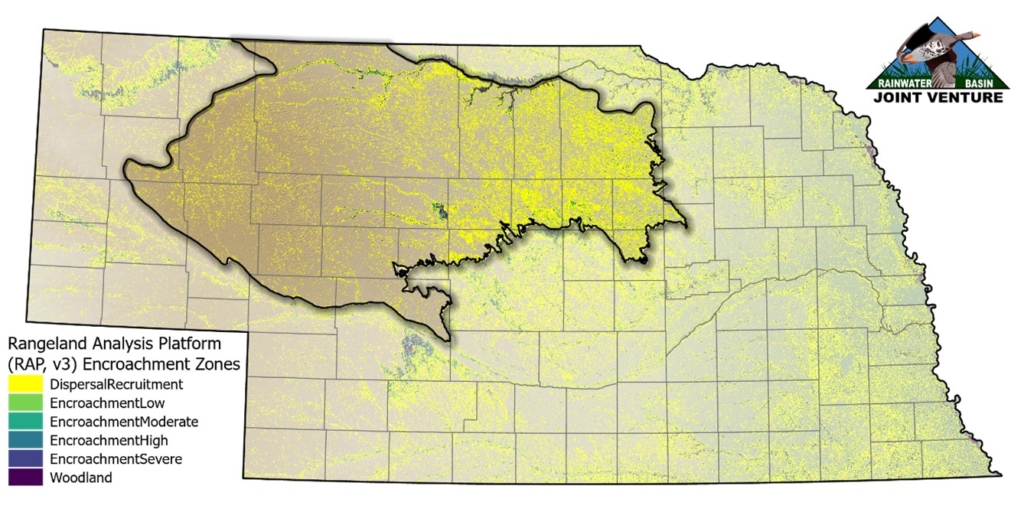
In 2017, the Rainwater Basin Joint Venture (RWBJV) applied for a partnership delivery opportunity through Natural Resource Conservation Service’s Working Lands for Wildlife Initiative (NRCS, WLFW) for dedicated funding through the Environmental Quality Incentives Program (EQIP). The WLFW Framework emphasizes prescriptive maintenance of intact or low-invasion grassland cores, only focusing on higher density tree removal where you can efficiently expand and combine existing cores. In this manner, the RWBJV established treatment priority tiers (figure 3), where intact/low density woodland “core grasslands” makeup tier 1, higher density tree canopy composition tracts adjacent to core grasslands makeup tier 2, and severely tree encroached tracts makeup the lowest priority, highest cost of treatment, tier 3.
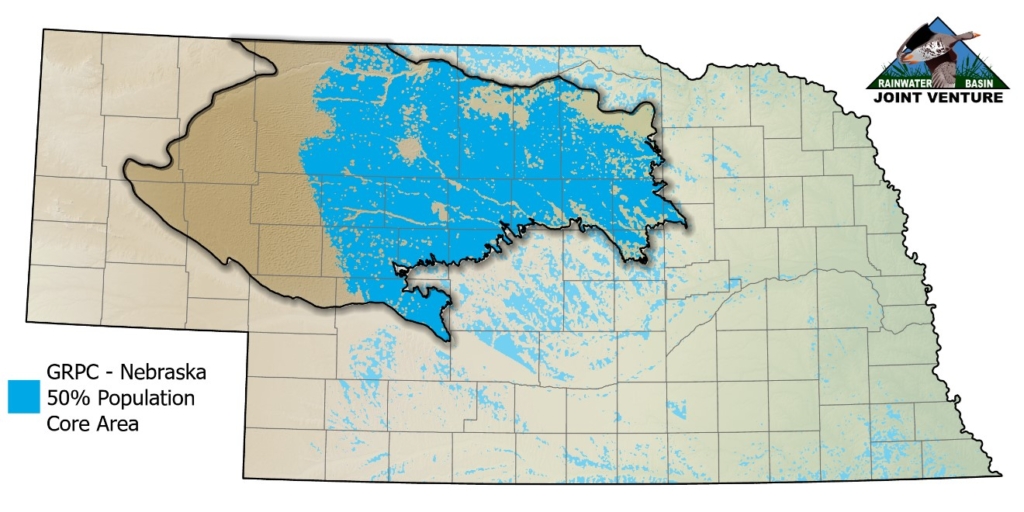
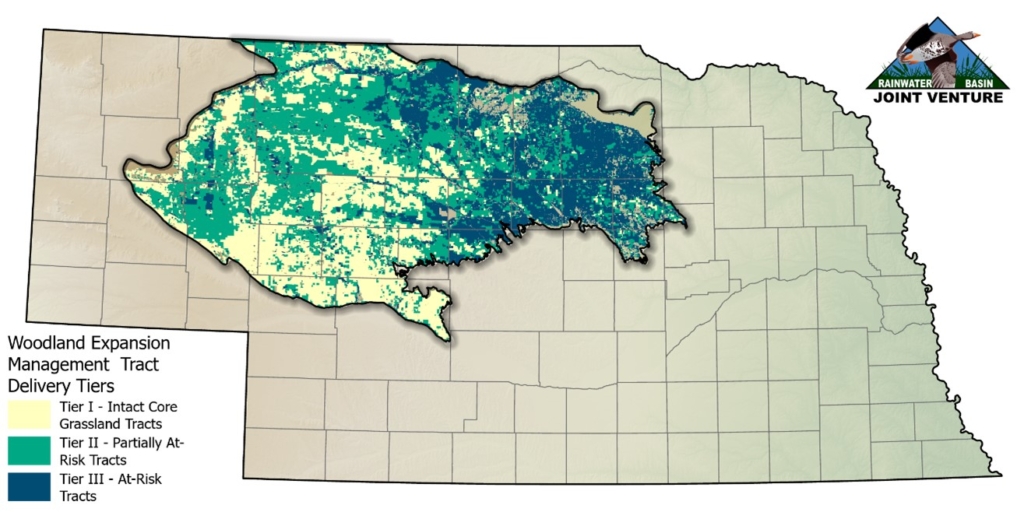
The Sandhills landscape is over 97% privately owned, requiring that projects be developed at the ranch level and scaled-up through neighbor buy-in. RWBJV Partners from Nebraska Cattlemen’s Association and Sandhills Taskforce (landowner groups), NRCS, Nebraska Game and Parks Commission, Pheasants Forever, and USFWS Partners for Fish and Wildlife work with landowners providing technical and financial assistance (cost-share) through EQIP and other voluntary incentive-based conservation programs. Eligible practices included: Cross Fence, Grazing Deferment, Prescribed Burning, Firebreaks, Brush Management, Livestock Watering Facilities, Pipelines, and Prescribed Grazing. From 2017-24, the partnership has provided 108,400 unique acres through EQIP, and 323,900 unique acres across all programs, of combined tree removal and prescribed fire to address woodland expansion in the Nebraska Sandhills.

The RWBJV works with U.S. Department of Agriculture (USDA) to develop EQIP factsheets and outreach materials about USDA and partner programs. RWBJV has a cooperator agreement with the USDA Farm Service Agency (FSA) and NRCS that allows RWBJV access to USDA spatial records including landowner and operator, Conservation Reserve Program (CRP), and management delivery. This data allows RWBJV to facilitate directed mailings and other contacts to priority landowners in coordination with state and local partners. From 2022-25, RWBJV produced over 124,000 points of outreach describing grassland opportunities across the state (postcards, letters, hosted meetings with NE Cattlemen local affiliates, constant contact emails, and social media messaging through the RWBJV channels – Facebook, Instagram, YouTube, etc.).
The RWBJV continues to scale-up grassland delivery throughout Nebraska. In 2024, the RWBJV was awarded $25 million through the NRCS Regional Conservation Partnership Program, Alternative Funding Arrangement (RCPP AFA). The goal of this RCPP opportunity is to provide an additional 250,000 unique acres of tree removal and prescribed fire over the next 5-years. The RWBJV also reapplied for a, previously awarded, $20.8 million companion RCPP (classic) in 2025 for establishment of minimally restrictive, USDA-held grassland and playa wetland easements.
